
The Unschlittplatz square with an ensemble of medieval buildings is one of the important historical attractions of the center of Nuremberg and part of the tourist route - the "Historical Mile of Nuremberg" (Historische Meile Nürnberg).
Unschlittplatz is located in the southwestern part of the old city of Nuremberg, on the banks of the Pegnitz River.
After the Second World War (in 1972), several medieval houses on the square that survived the war had to be demolished, but the resistance of the activists of the city prevented the demolition. The houses were restored in the period from 1976 to 1981, and since then their ensemble resembles the former appearance of the square.
The name of the square "Unschlittplatz", which means "Fat Square" or "Greasy Square", comes from one of the historical buildings located around the square - Fat House or Greasy House (Unschlitthaus / Unschlitthaus).
The building was erected by Hans Beheim the Elder in 1490-1491 as one of the "granaries" of the city.
Between 1562 and 1835, the building housed the city monopoly authority for the sale of fat (lard). Up until the 19th century, lard was of great importance as a raw material for the manufacture of tallow candles, soap, automobile grease and shoe wax.
Today, the historic building impresses with its massive structure, carefully thought out and perfectly fitting into the overall architecture of the building with a Gothic portal on the south side, an openwork Gothic stepped pediment and an overhanging roof.
The fat house is located on the eastern edge of the square, at the address: Obere Wörthstrasse 26 (Obere Wörthstraße). More about the Fat House...

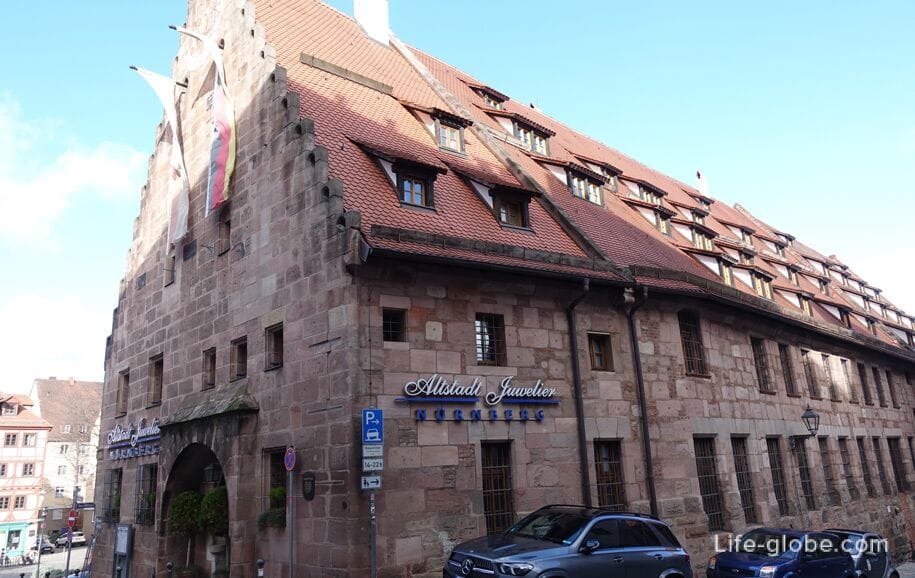
Opposite the Fat House, at the address: Unschlittplatz 7B, there is a half-timbered building, which is referred to as the "Captain's House" (Hauptmannshaus / Hauptmannshaus).
The building was the official residence of imperial city officials.
During the history of the house was rebuilt several times. In the exterior, the wooden facade of the store and a small corner figure of St. Roch (circa 1520) are attractive. The figure is a copy of the original.
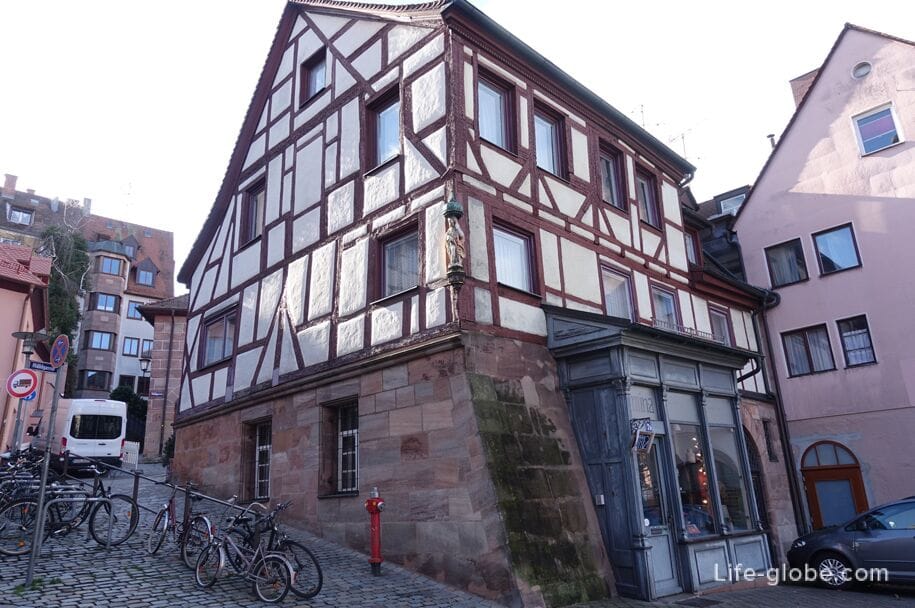
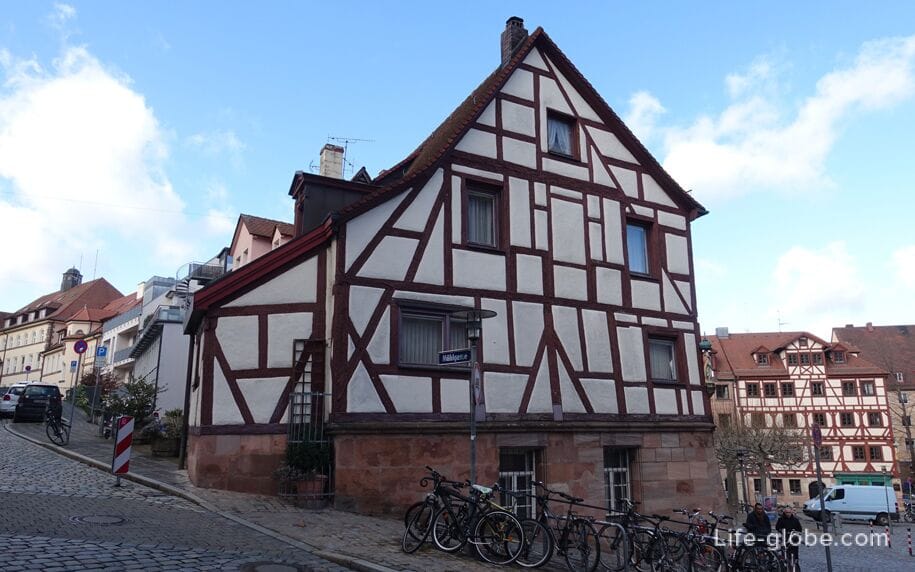
On the western side of the square, three buildings numbered 8, 10 and 12 are notable.
The corner half-timbered house at the address: Unschlittplatz 8, was mentioned back in 1599 as a house with an image of Mary. On the corner of the house there is a figurine of the Madonna with a baby in her arms, carved from wood (the original is in The German National Museum).
The house is called "Kaspar Hauser" (Kaspar Hauser). Kaspar Hauser or Gaspar Hauser (presumably April 30, 1812 - December 17, 1833) was known as the "Child of Europe" and was a young man who practically could not speak and walk, and was found near this house on May 26, 1828 and killed by an unknown 5 years later. The young man's claims that, for as long as he could remember, he had always been kept alone in a dark room on bread and water attracted international attention and a rumor spread that Hauser was the crown Prince of the Baden throne, abducted from the cradle in infancy.
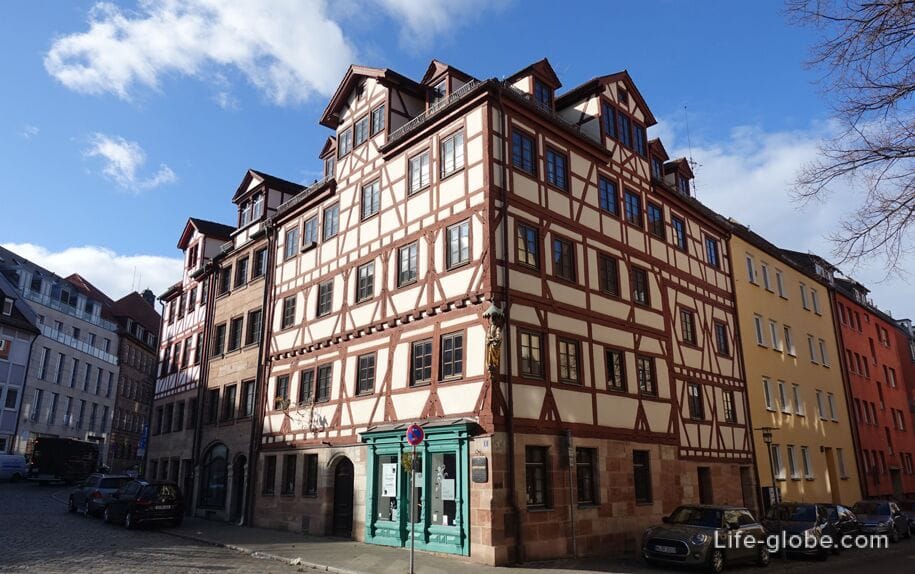
Memorial plaque on the house
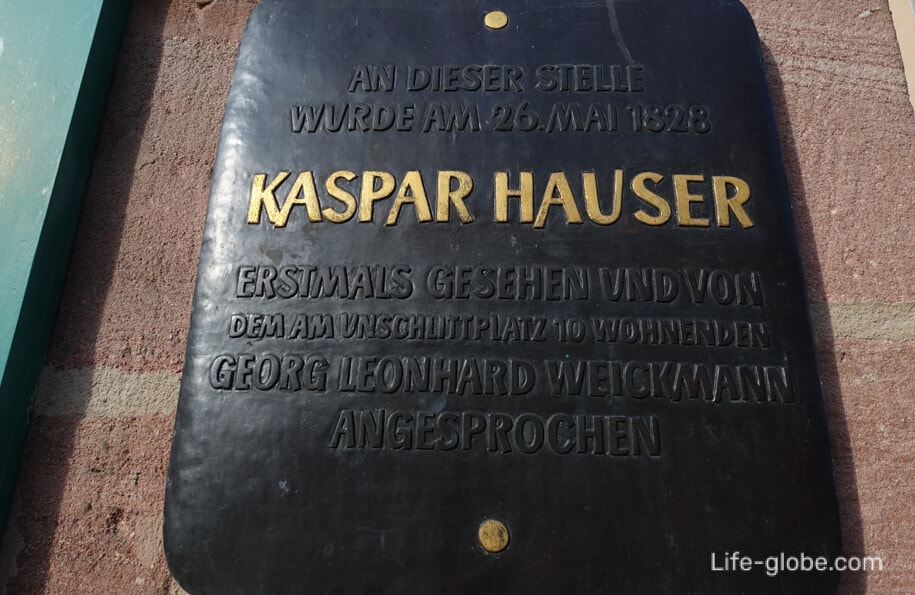
On the north side of the square there are two houses, numbered 5 and 7.
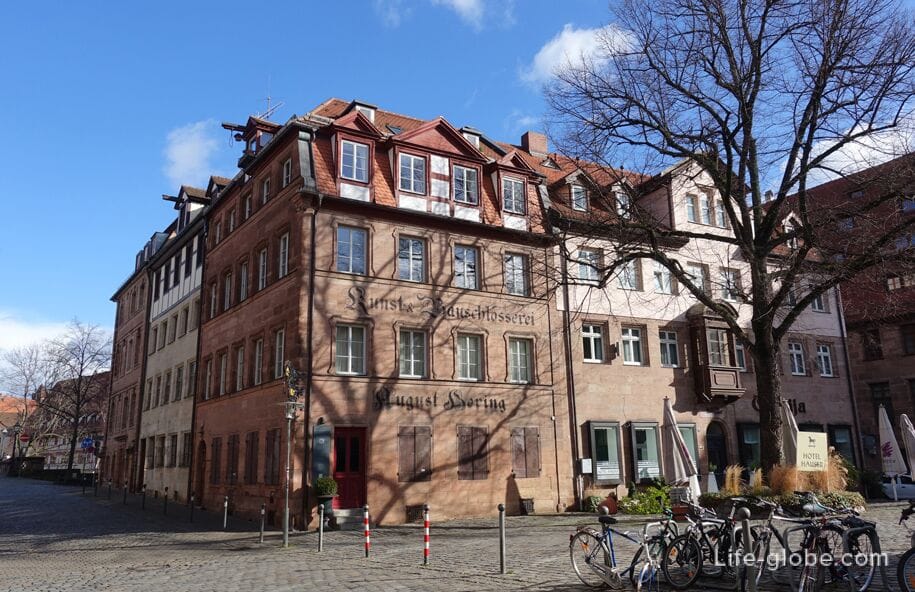
The house at number 5 originally dates from about the second half of the 18th century and is a Neo-Gothic building.
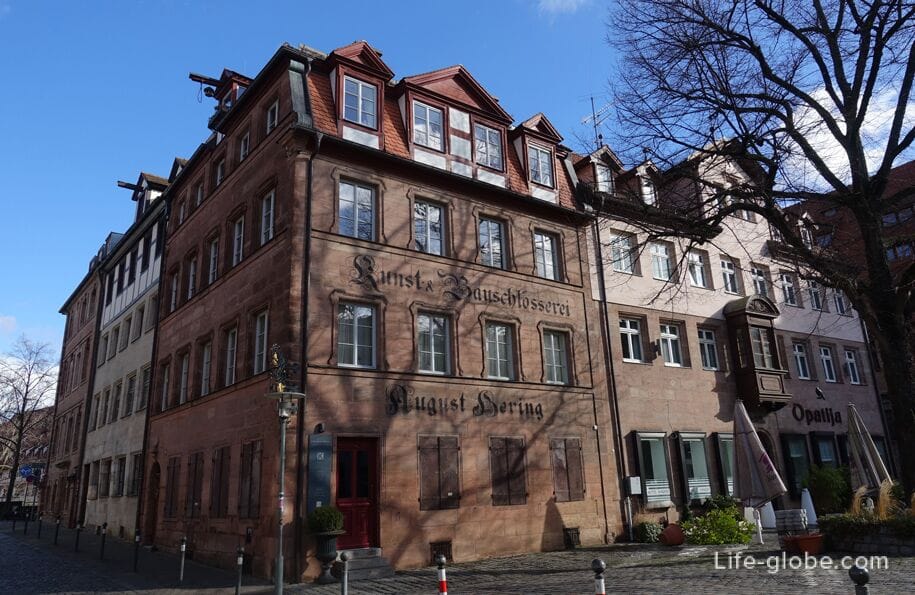
The house at number 7 is a characteristic residential building from 1852 with a wooden choir from 1950.
Today, the building houses: a restaurant and a 3-star Hauser Boutique Hotel with free Wi-Fi, parking and room service.
The rooms are equipped with a flat-screen TV, a minibar and a private bathroom. Link to the hotel
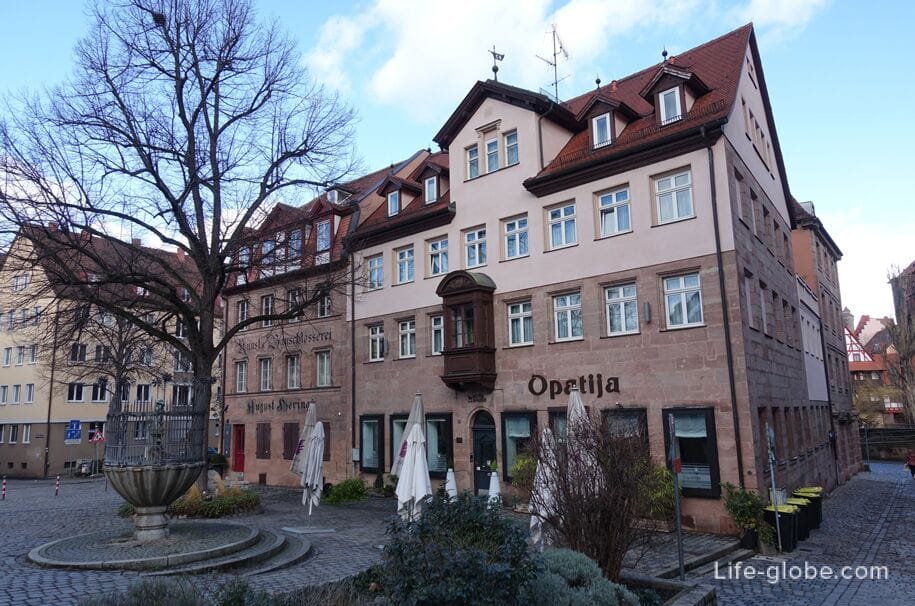
In front of the house, on the Unschlittplatz square, there is the Piper fountain (Dudelsackpfeiferbrunnen), cast in bronze by the local Lenz art workshop in 1880, designed by the Nuremberg artist Friedrich Walhelm.
The artist designed the fountain based on a wooden linden model dating back to the first half of the 16th century, which is located in the German National Museum.
There is a legend about a drunken and sleeping piper, who is said to have been loaded into a plague cart during an epidemic in Nuremberg in 1437, and who was able to get rid of his terrible situation only by playing his bagpipes. However, it is unclear whether the urban legend has any connection with the creation of the fountain sculpture.


The house at number 1, directly facing the Pegnitz River, is a palace in the Nuremberg Baroque style of 1754 by Konrad Buettner. The last floor was built in 1860, and the choir was added in 1912.

To the left of the house at number 1, the northern (rear) facade of the Fat House is visible, which is directly incorporated into the wall, which is a protective structure of the Pegnitz River.
In the photo, the Fat house is on the left, just behind the bridge, the house number 1 is on the right

From the Unschlittplatz square in the north direction, two bridges run across the Pegnitz River:
- three-arched stone bridge of Maximilian (Maxbrücke);
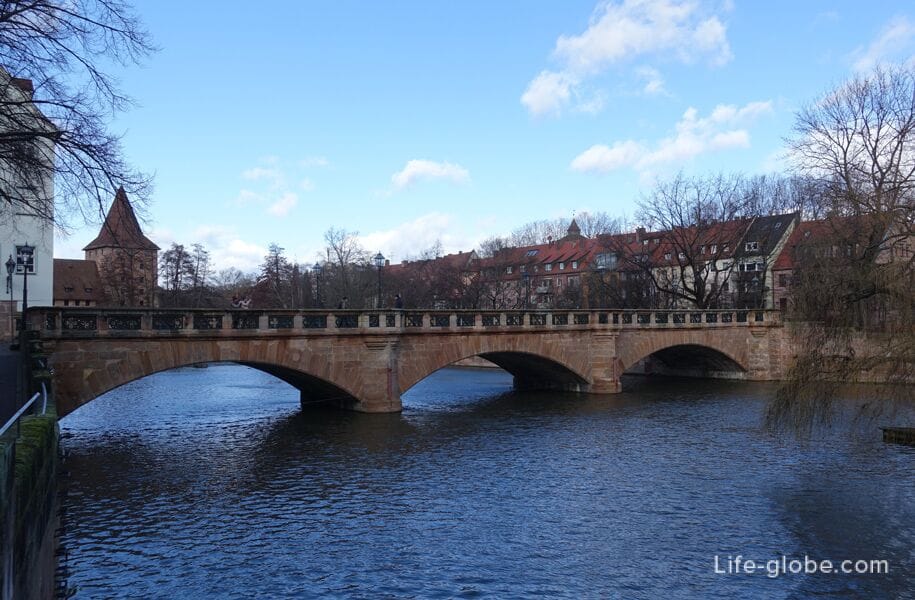
- wooden pedestrian bridge of the Hangman (Henkerbrücke) with a sloping roof, which leads from the square to the Hangman's Tower (Henkerturm / Henkerturm) on the island "Flea Market" (Trödelmarkt).
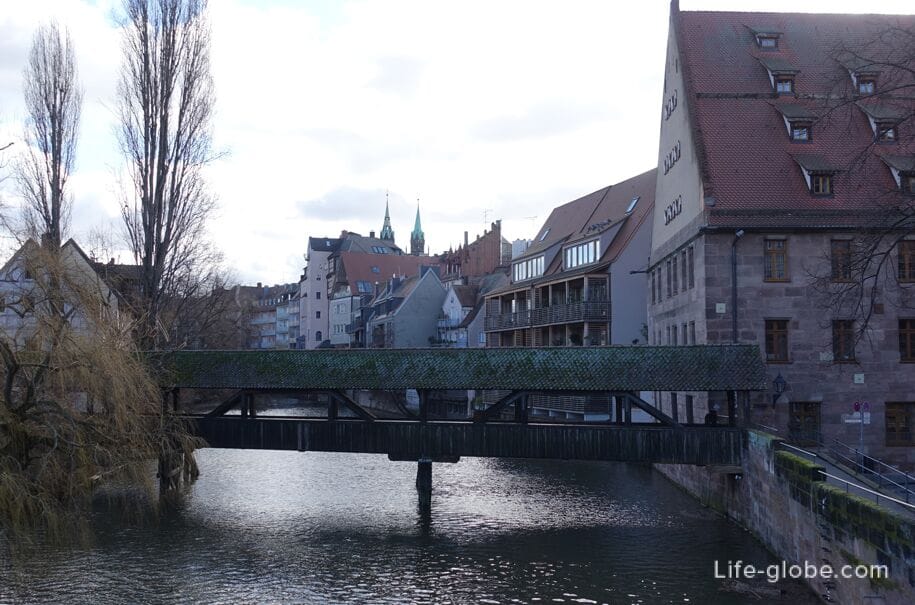

In addition to the 3-star Hotel Hauser Boutique, located directly on the Unschlittplatz, near the square, and therefore in the historical center of Nuremberg, you can stay:
The Nuremberg Holidays Studio Apartment complex offers free Wi-Fi throughout, private parking and family rooms.
All rooms/apartments are equipped with a flat-screen TV. There is also a kitchenette, equipped with a microwave, toaster, refrigerator, stove, coffee machine and kettle. The private bathroom comes with a shower and a hairdryer. Link to the complex
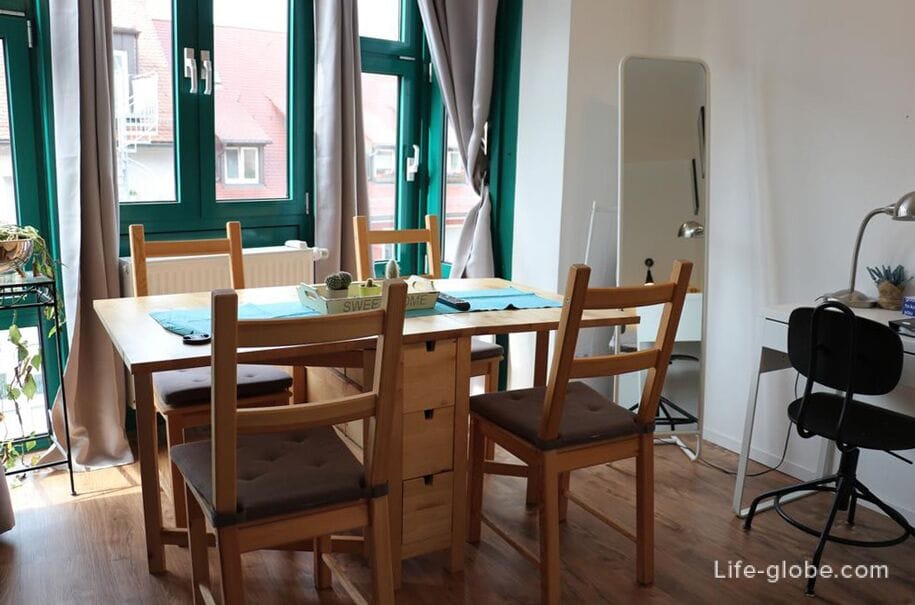
All accommodation facilities in Nuremberg, including in the city center and near the square, can be viewed and booked here